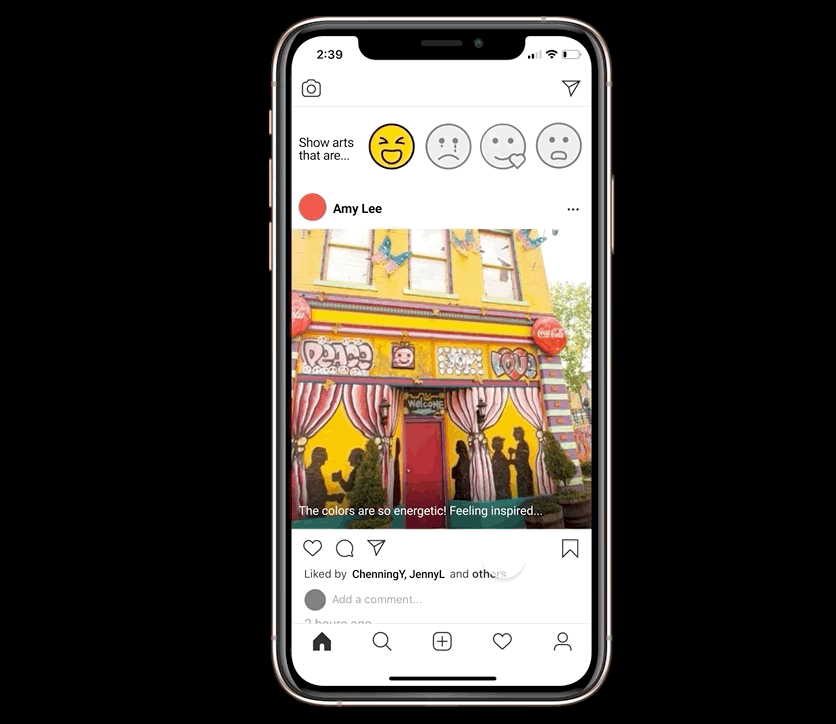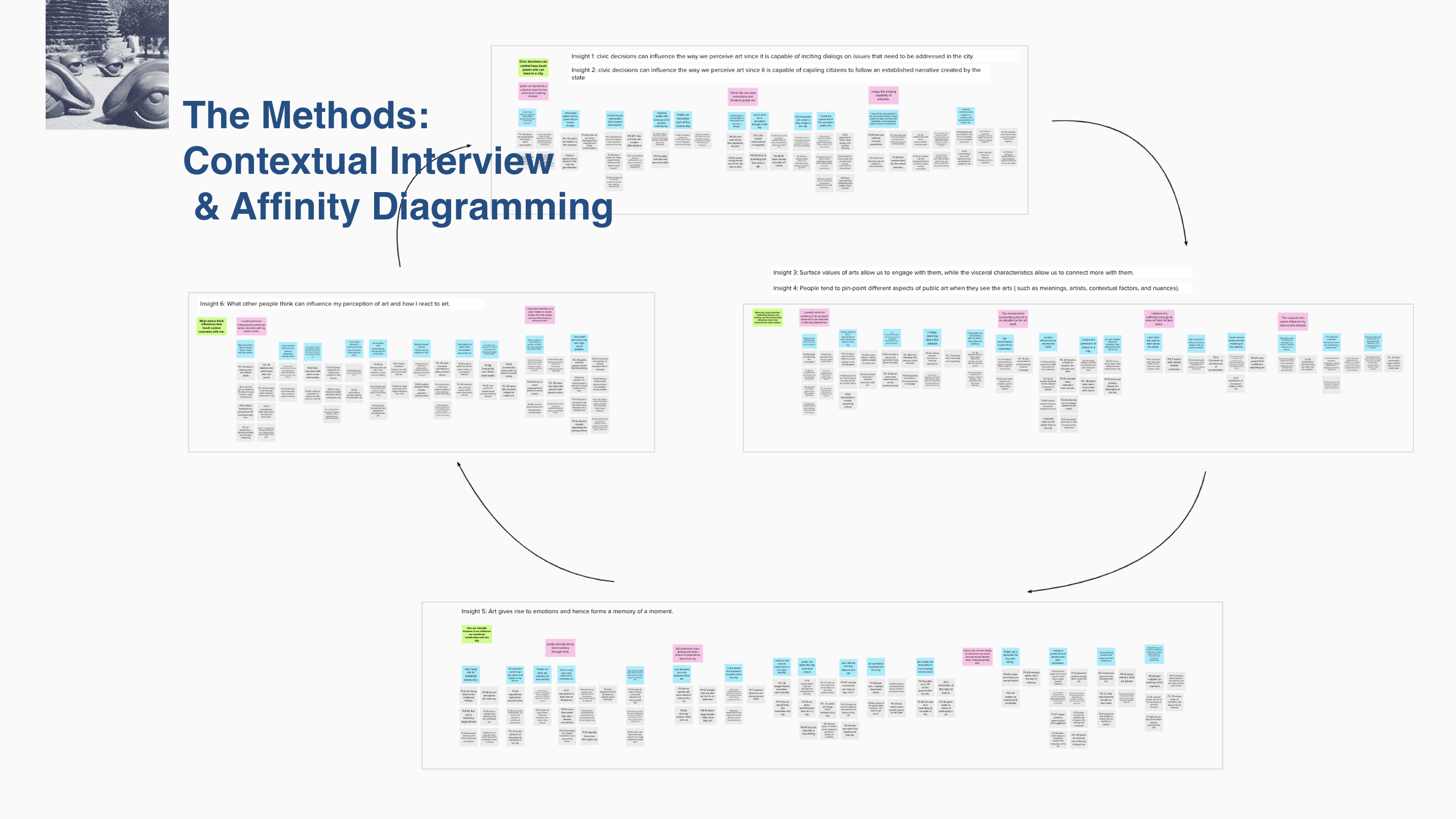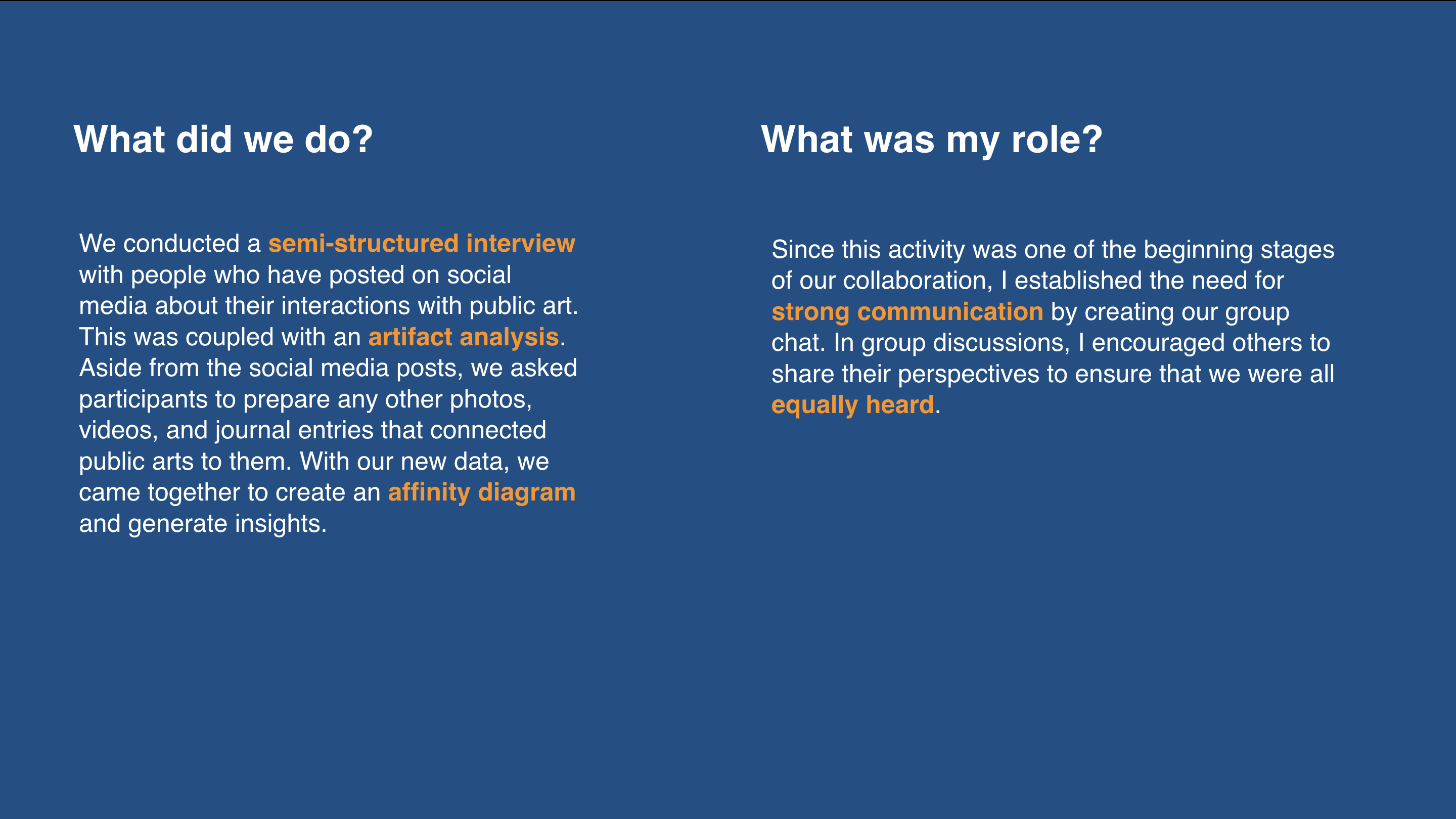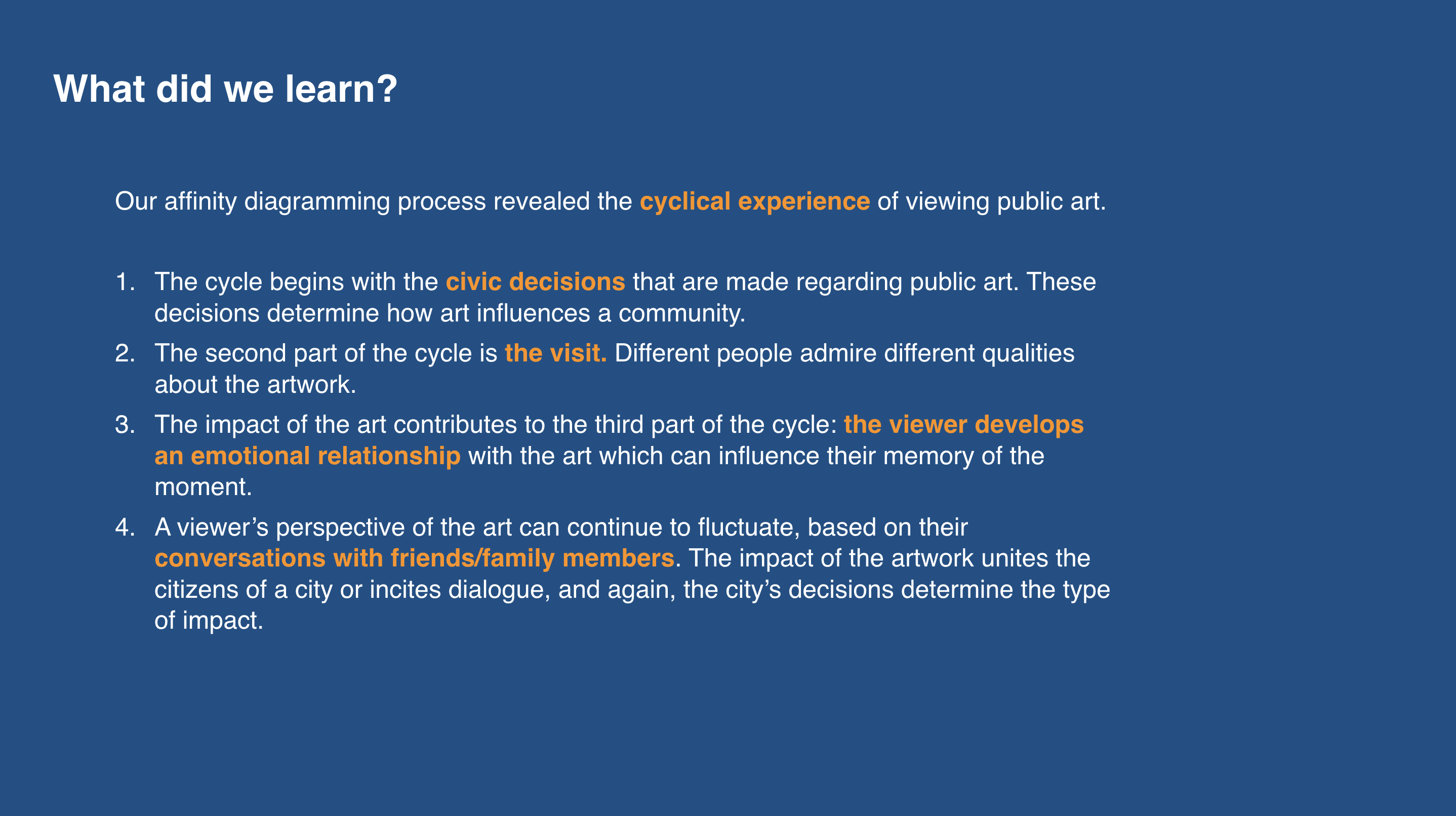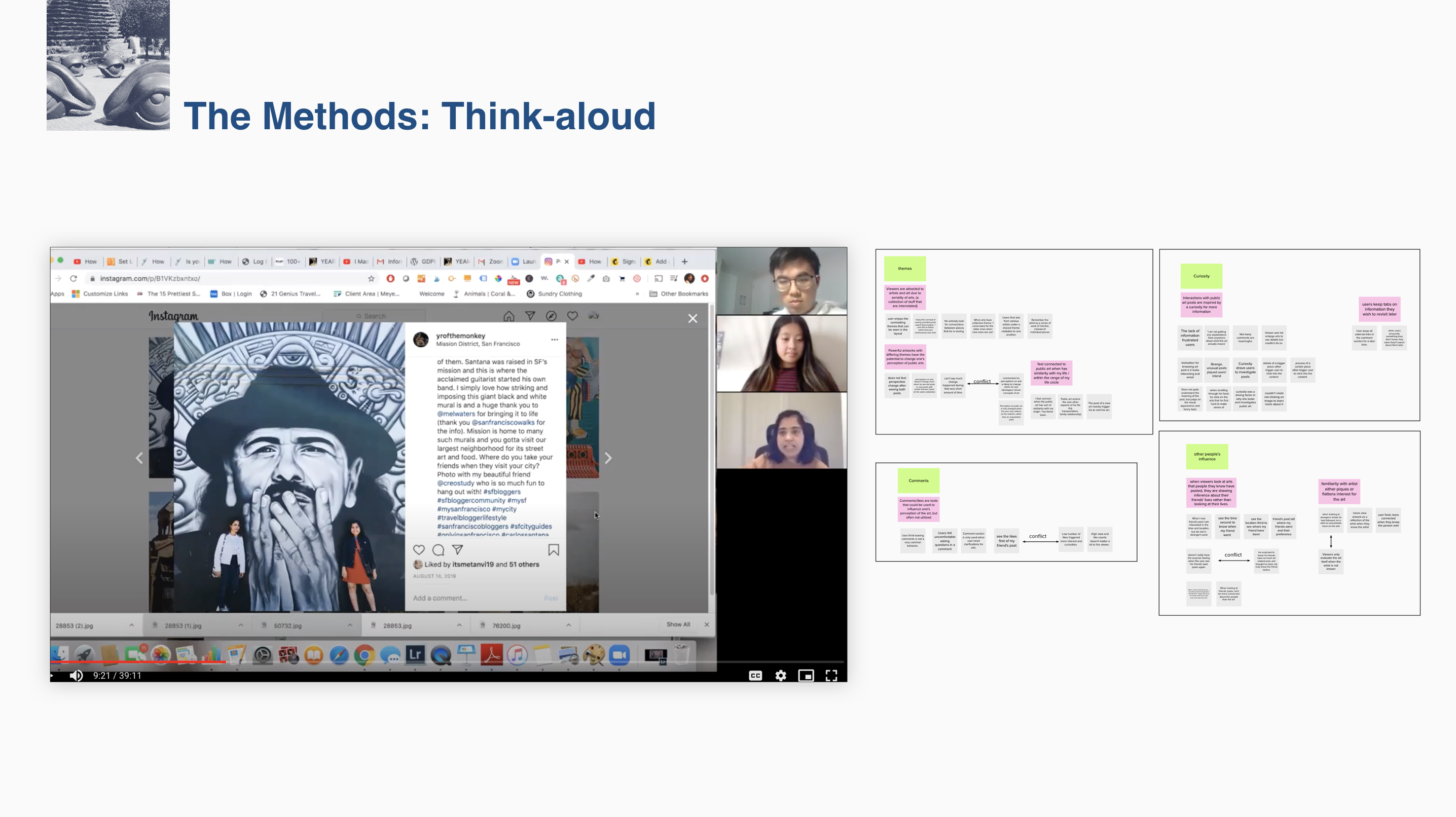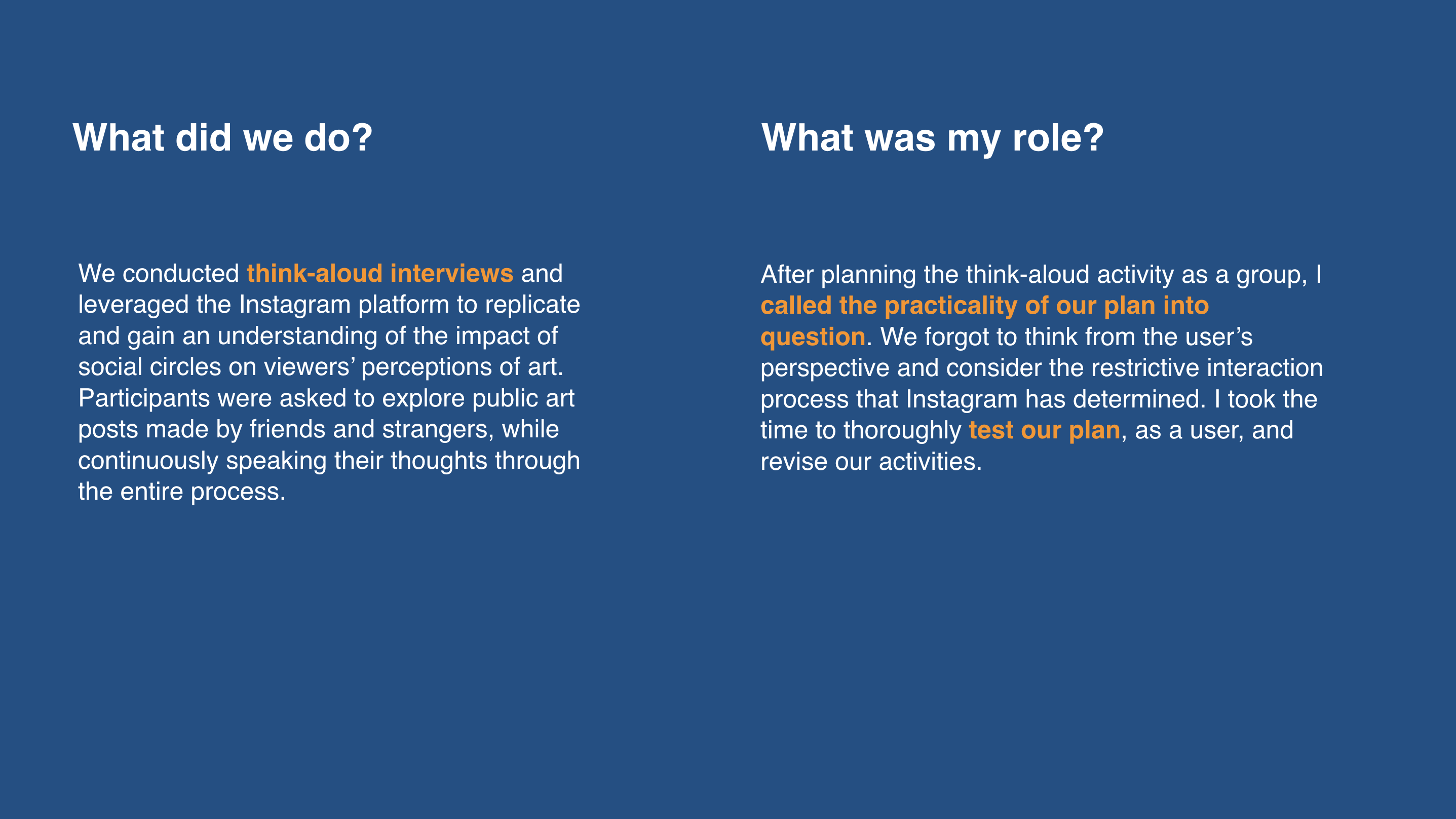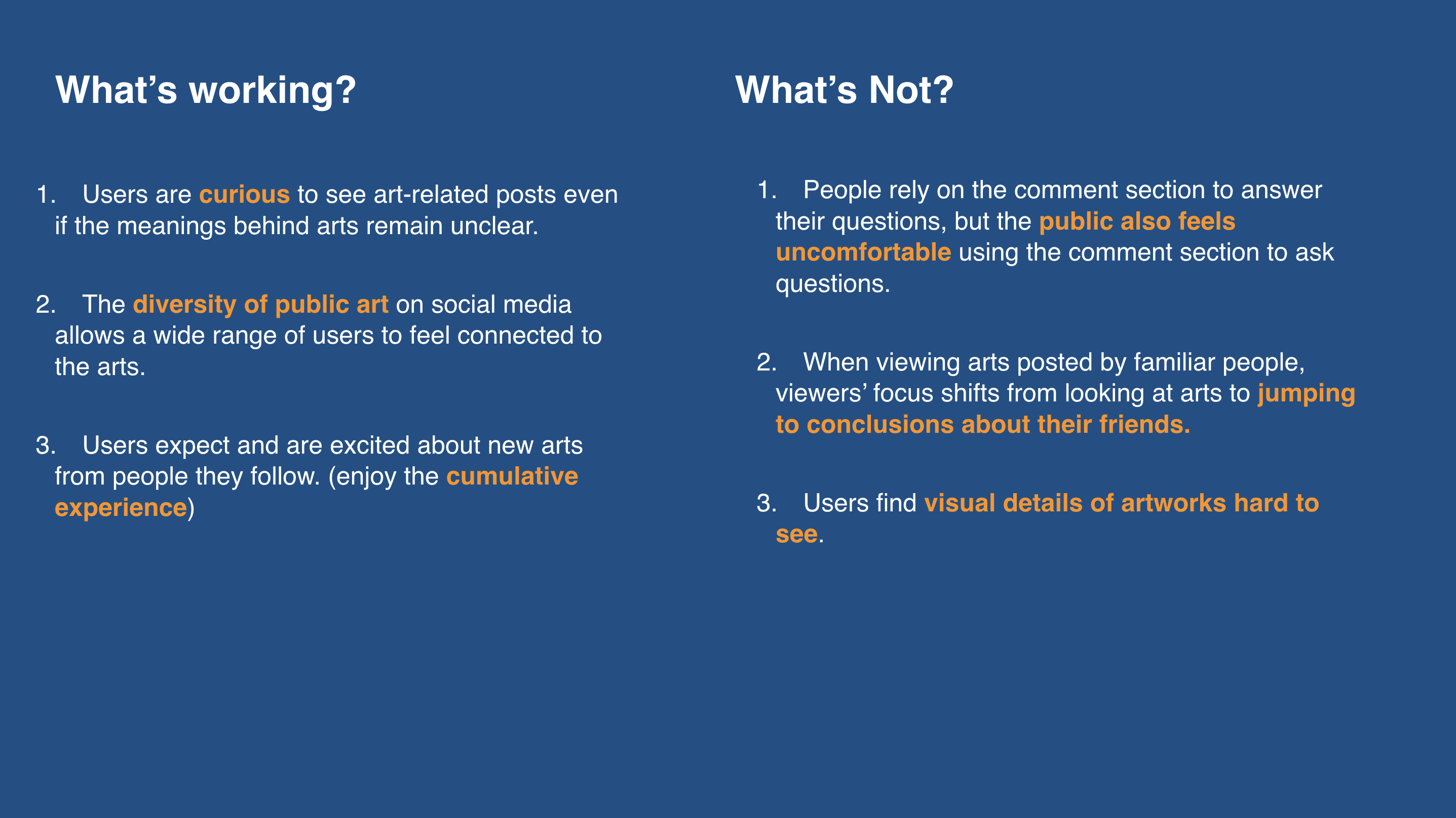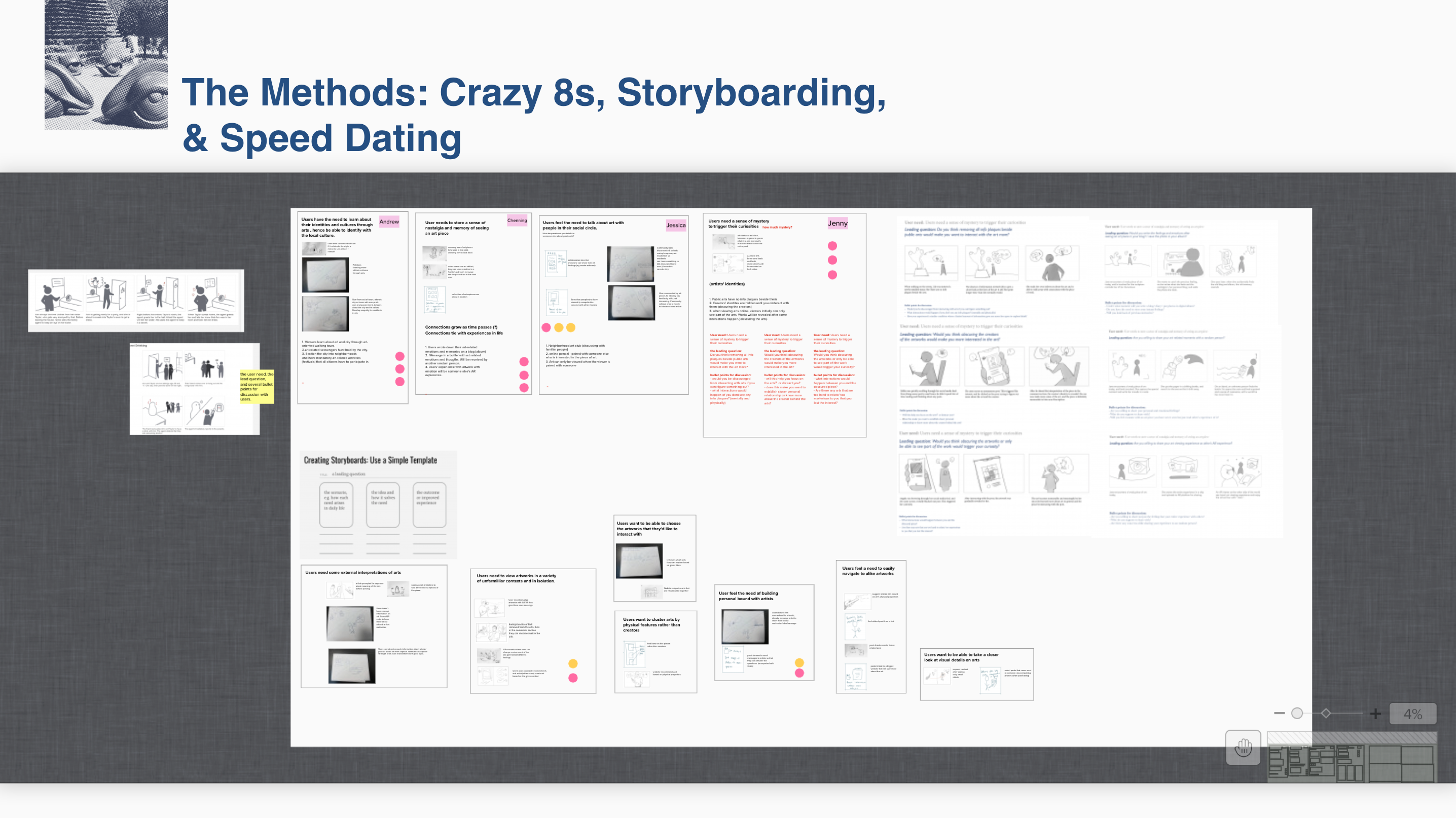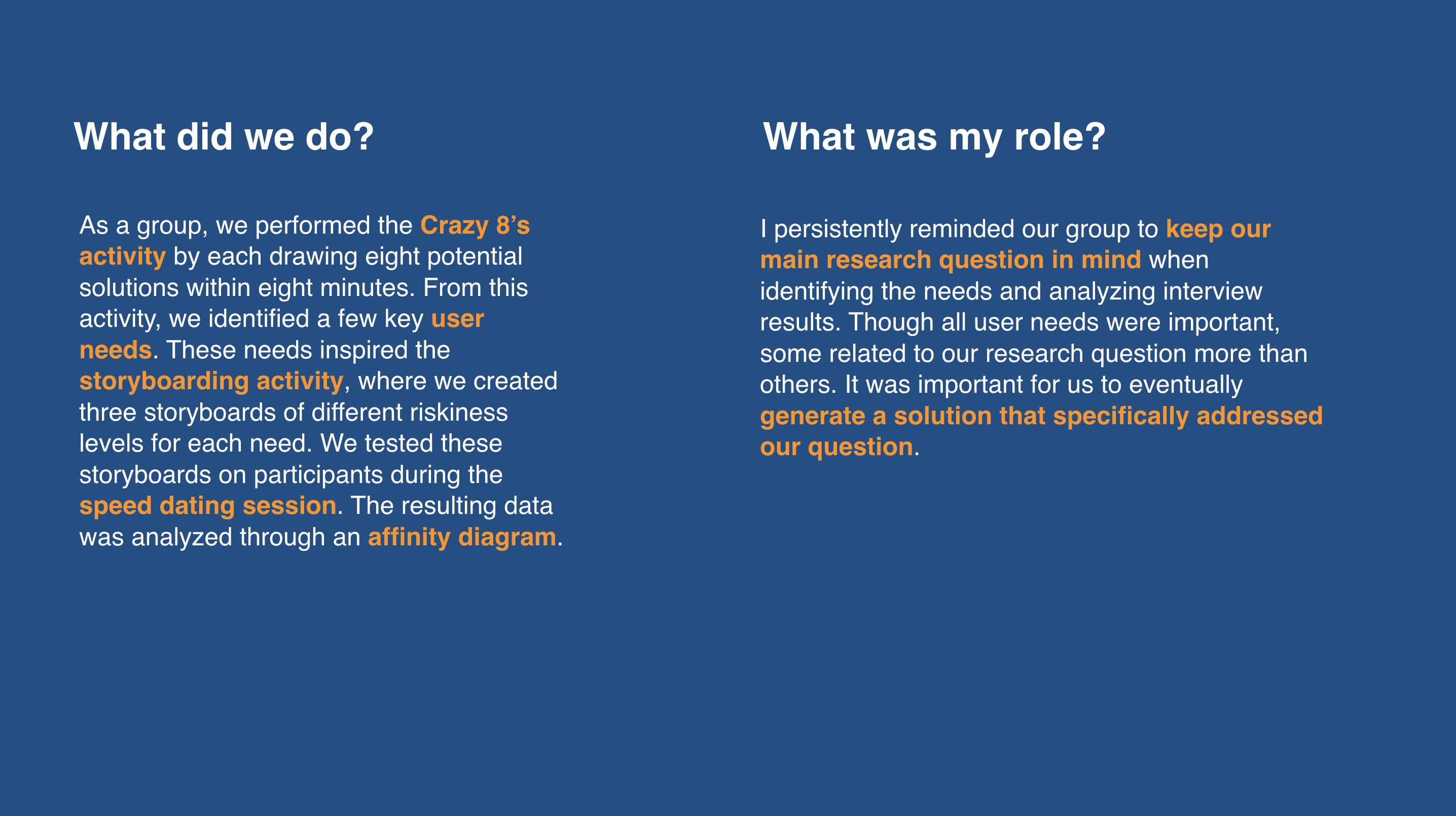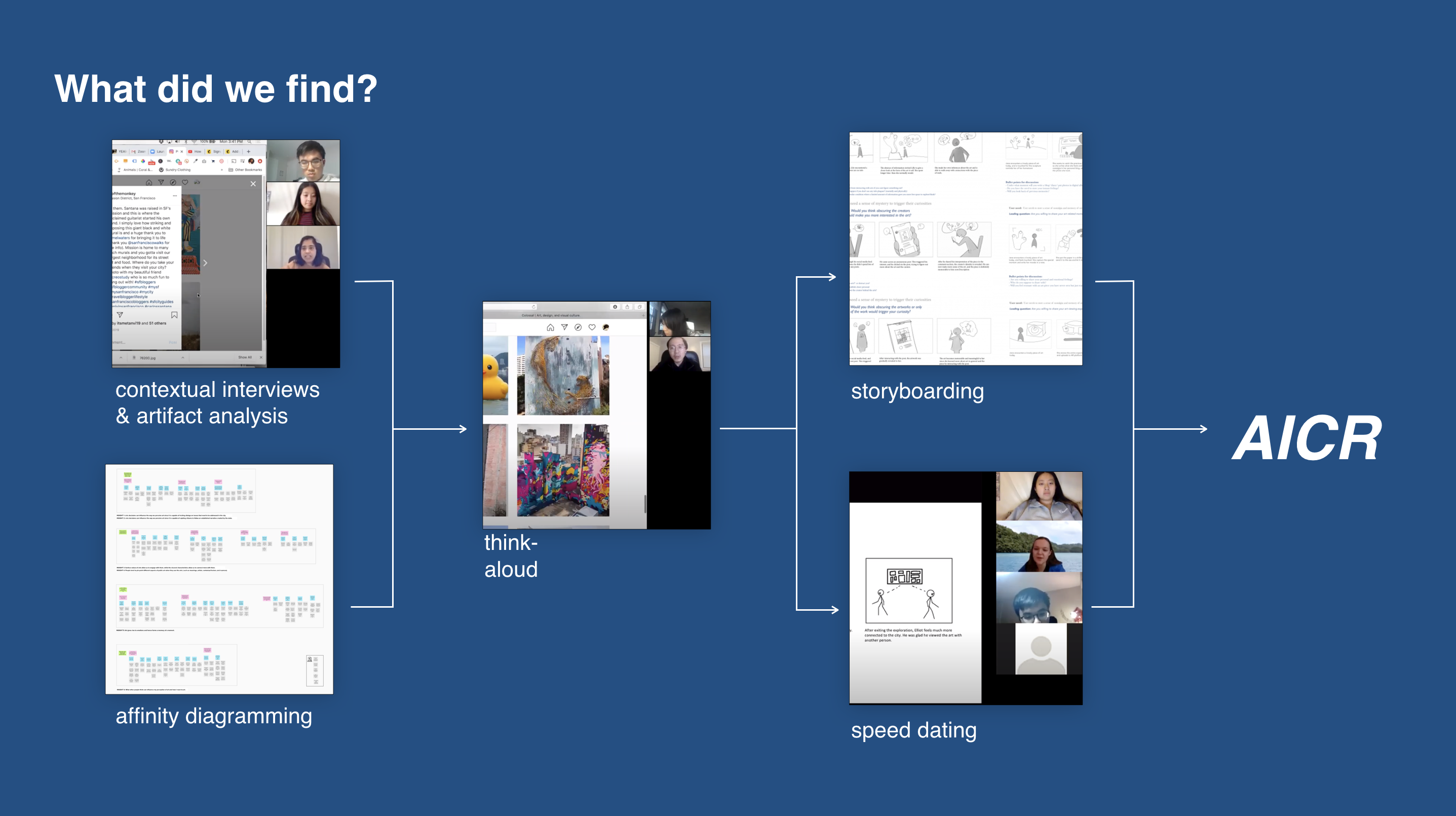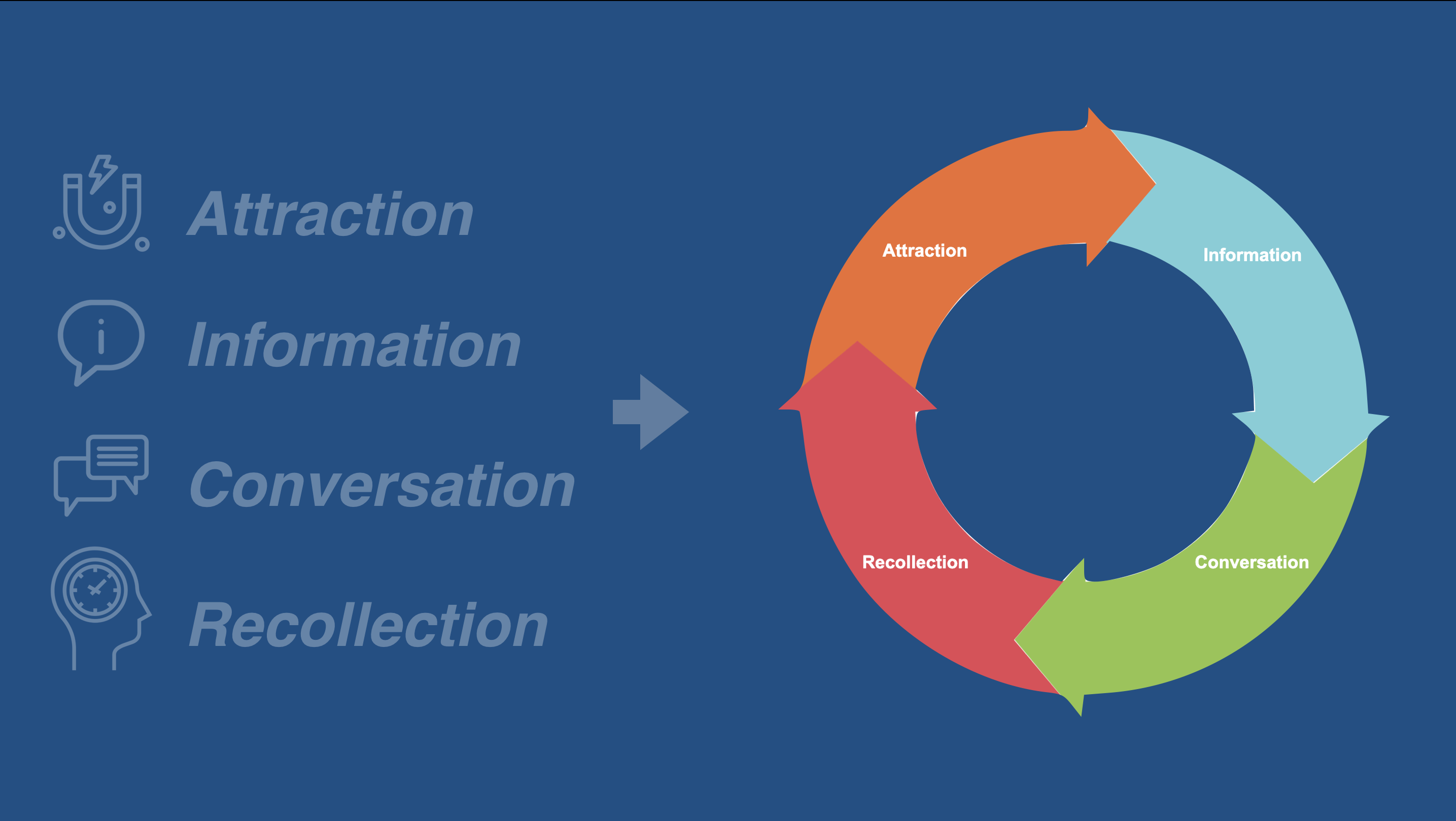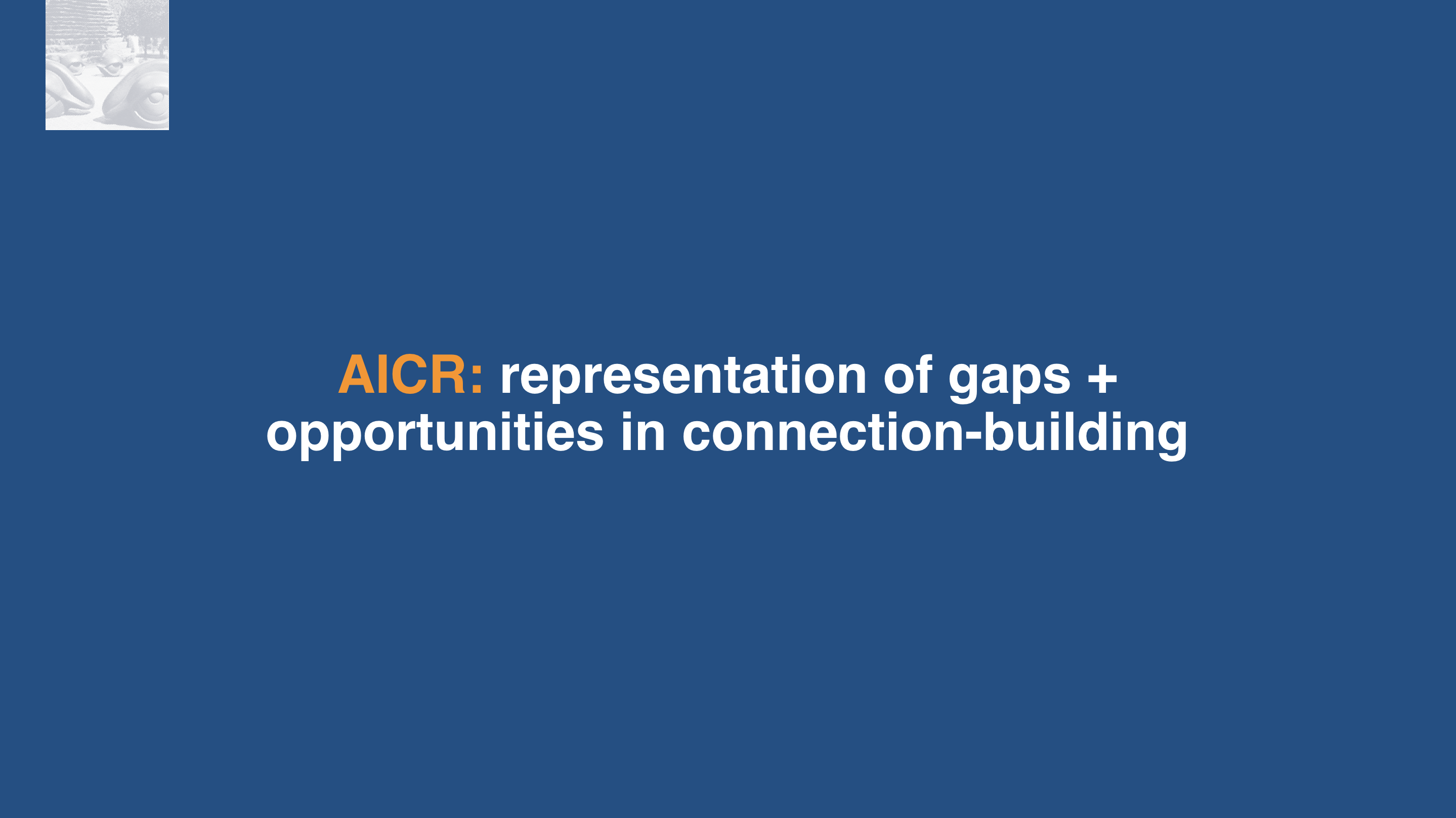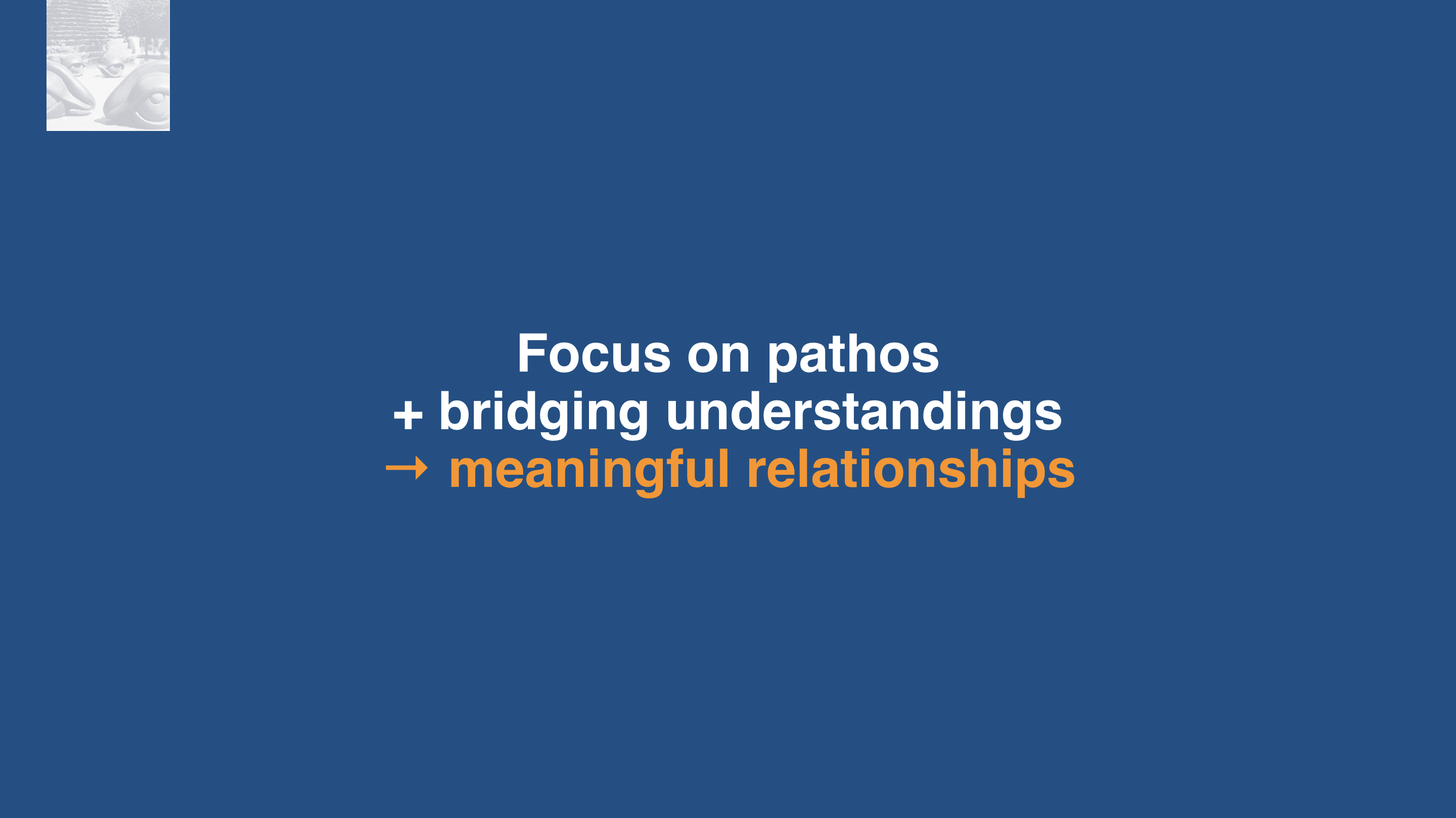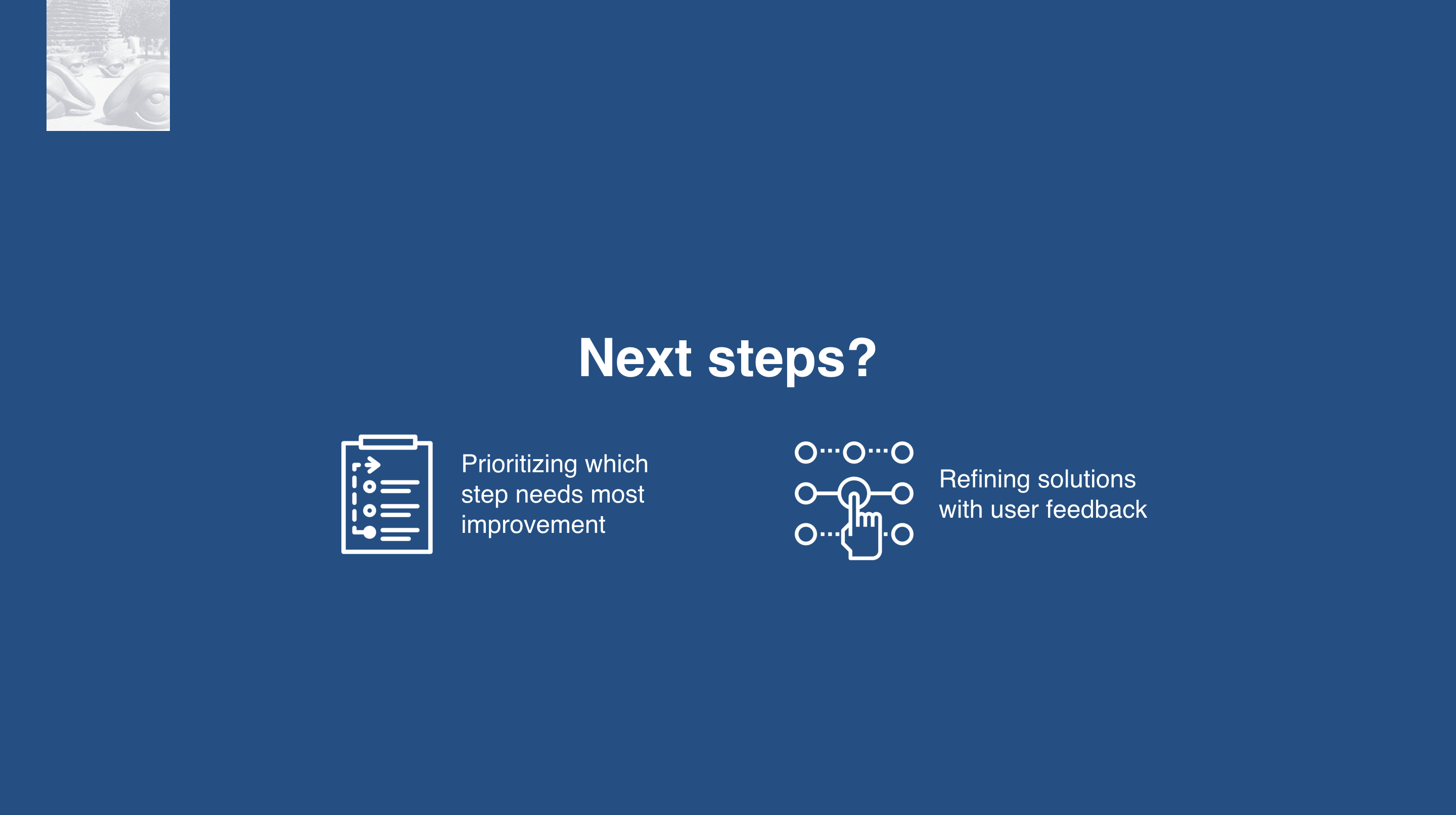Jessica Xiao
Increasing Public Arts' Values Through Building Personal Connections
User Centered Research and Evaluation, Spring 2020
| Jessica Xiao Project Manager. Strengthened communication by encouraging each team member to share their ideas. Resurfaced perspectives that were quickly dismissed. Recruited participants, conducted interviews, and participated in interview analyses. |
Jenny Shuyu Designer. Compiled deliverables during progress checkpoints, by summarizing work into a presentatable format. Recruited intervieews and conducted interviews as well. |
| Andrew Chuang Analyst. Streamlined data collection methods and analyzed collected data. Took part in the interview and group analysis process. |
Chenning Ye Notetaker. Ensured spoken ideas were recorded during group discussions. Participated in interview recruitment process. |
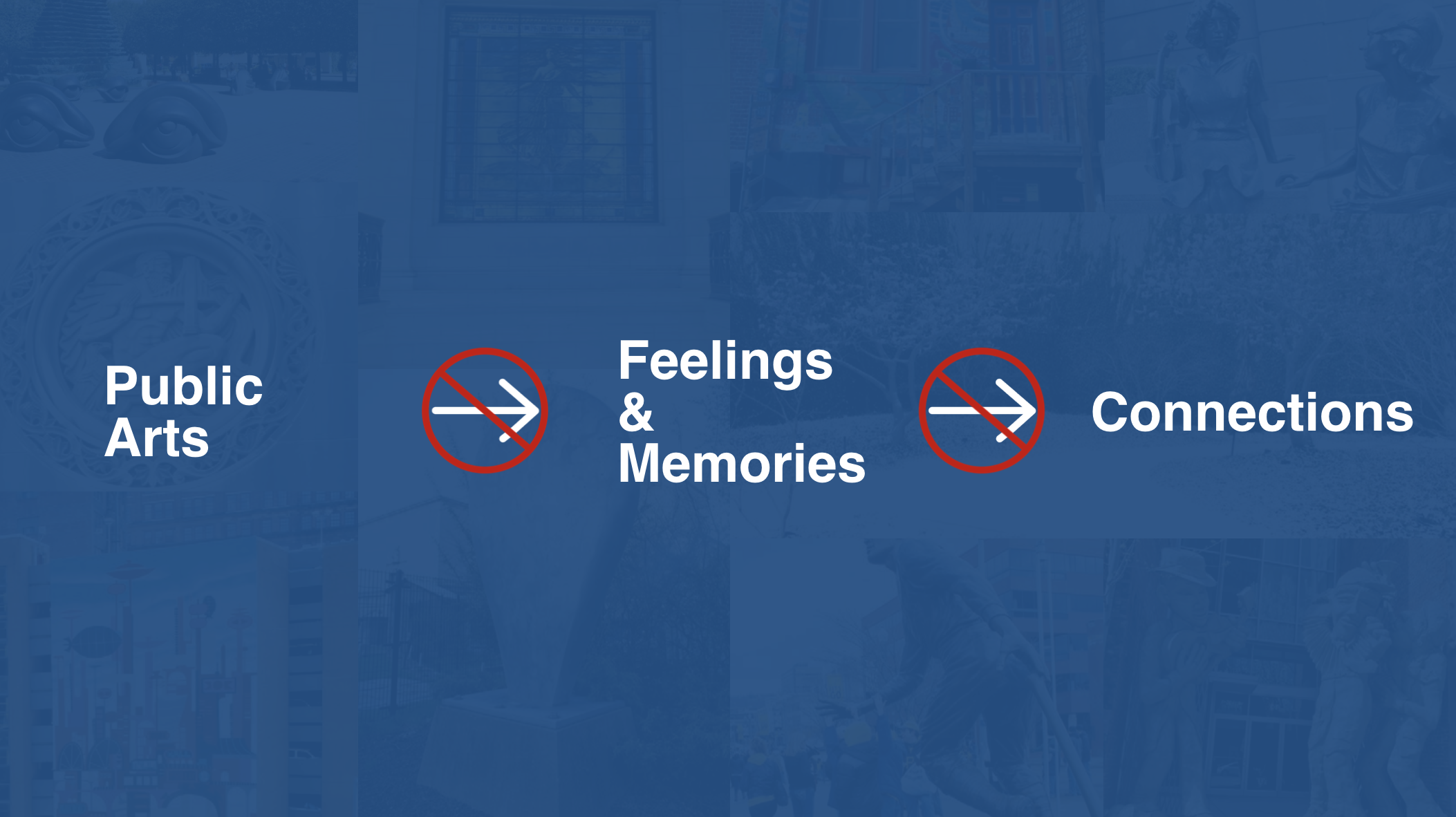
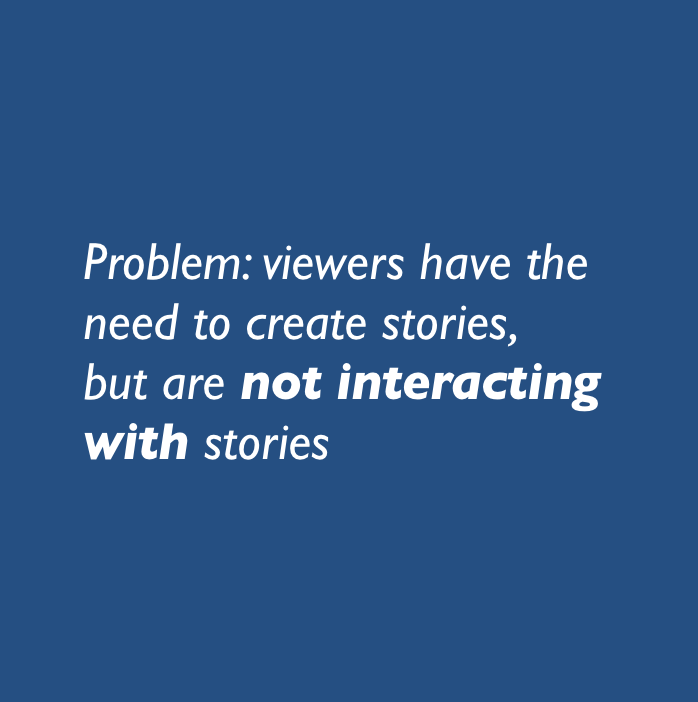
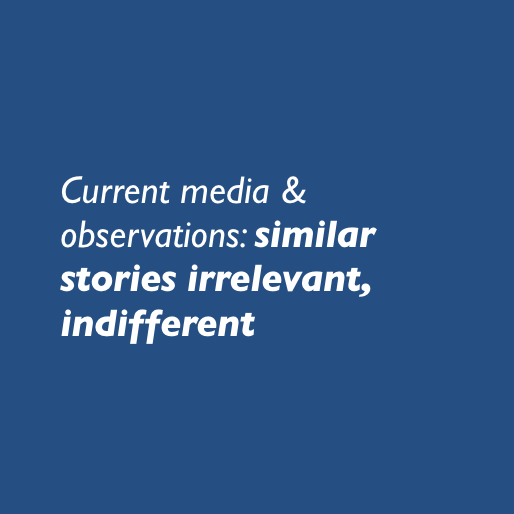
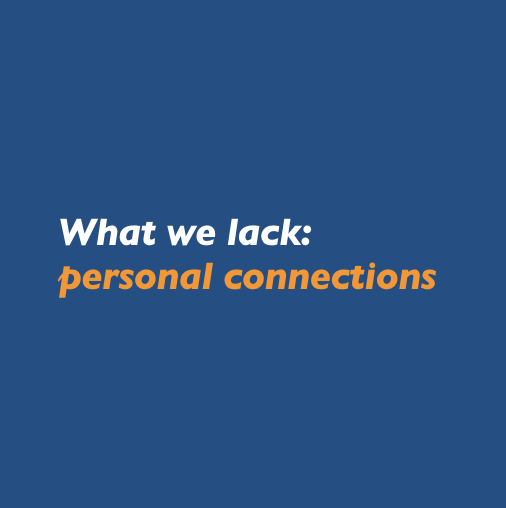
How might we increase personal connections between viewers and public arts?
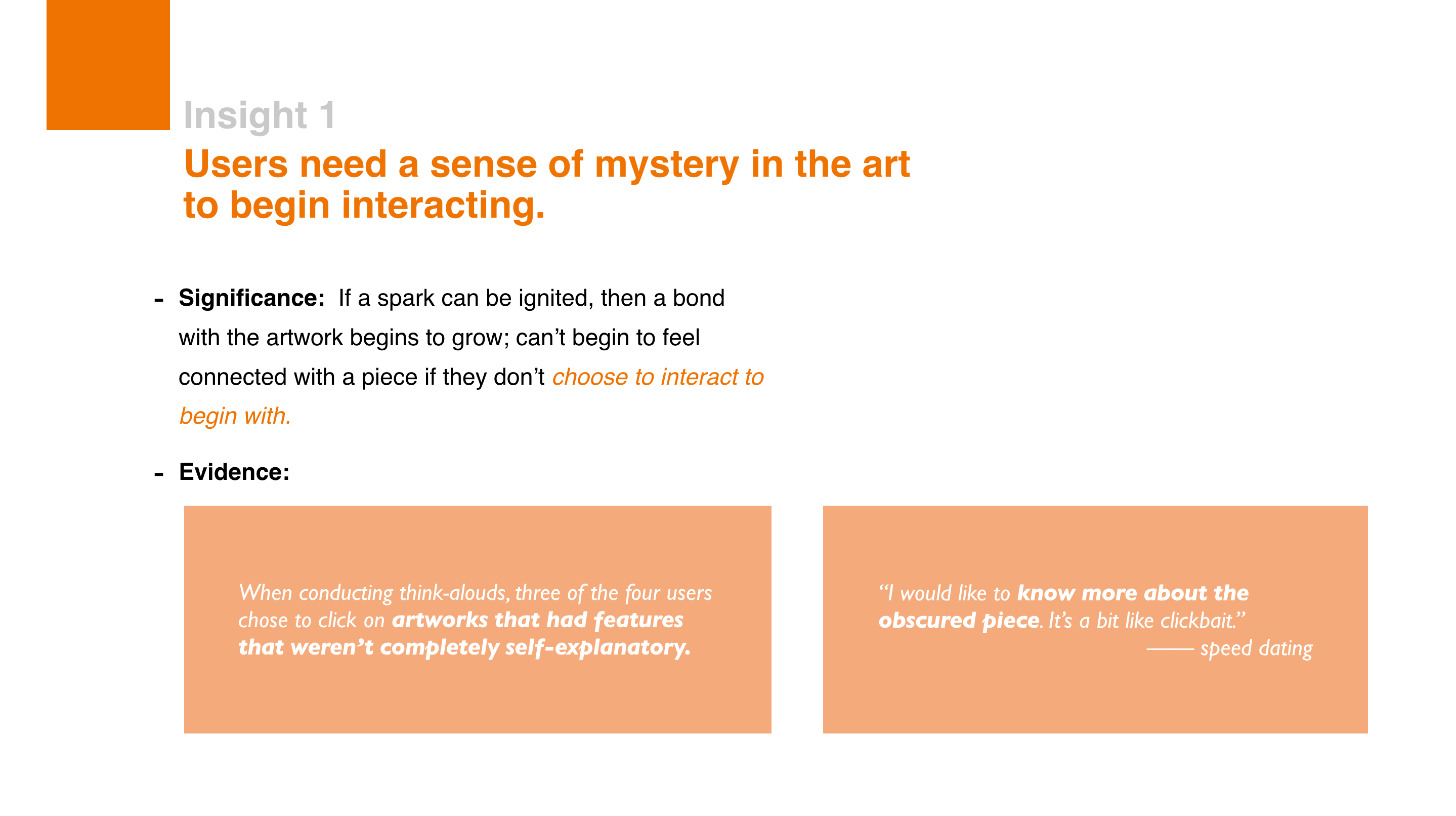
Insight 1
Possible Design:
Draw people into viewing the public arts by obscuring certain aspects of the arts
+
an AR app to unveil the full appearance of the art with only part of it being visible in physical environment
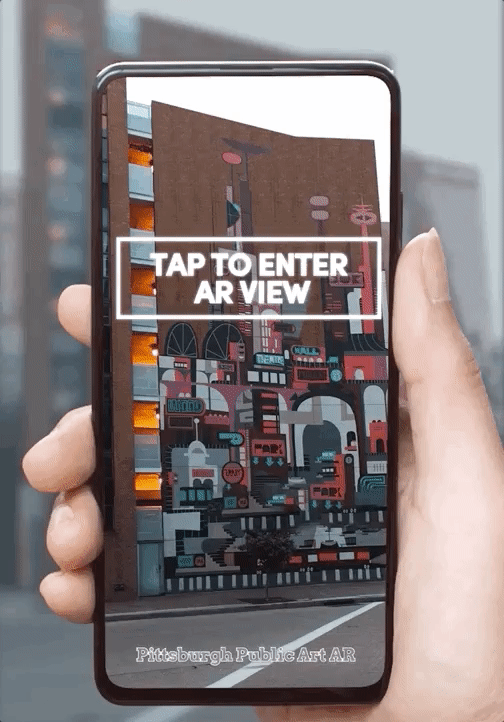
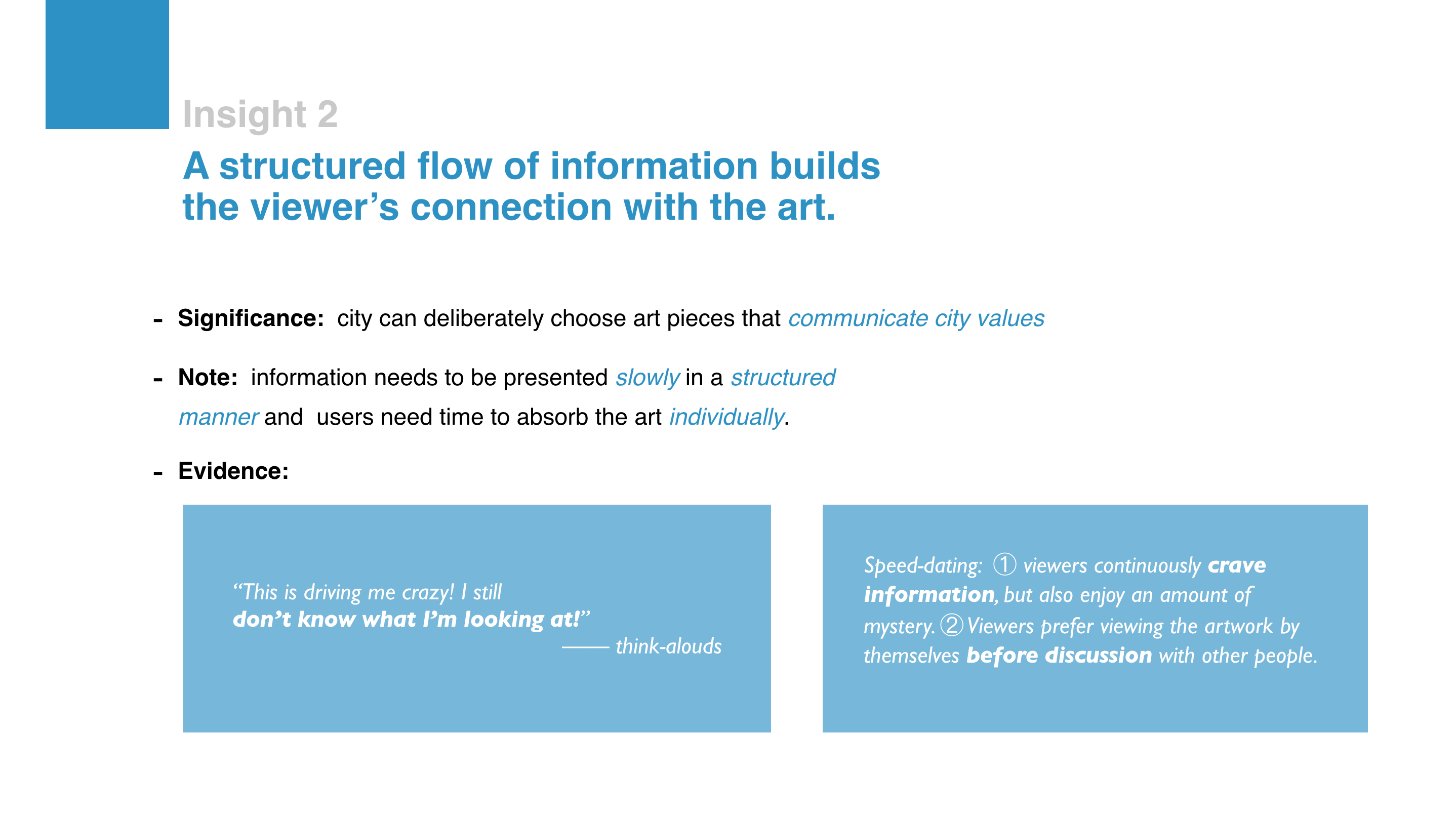
Insight 2
Possible Design:
Only a short description of the artwork is initially displayed
+
Use different, intuitive buttons/tabs to represent different information
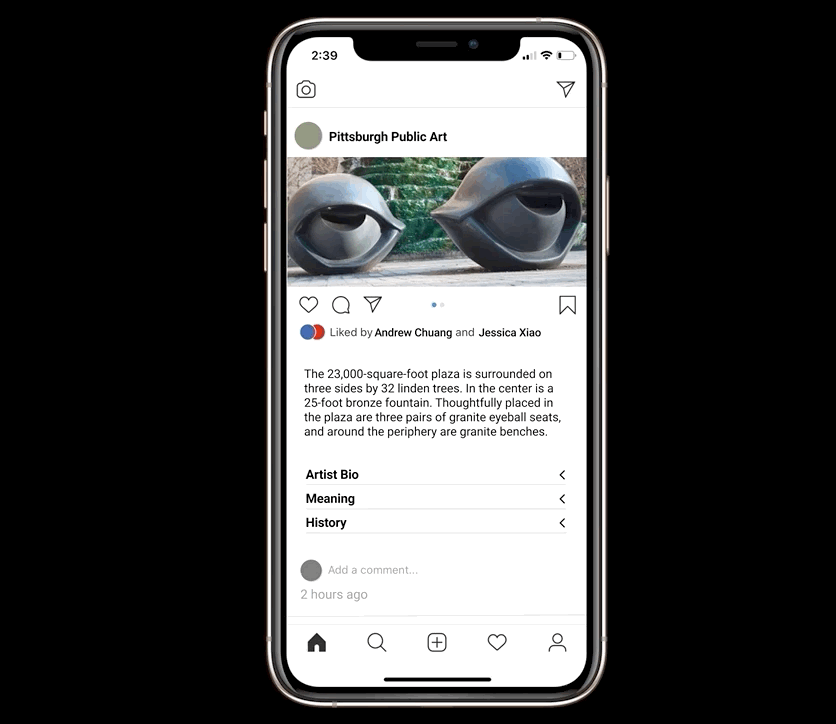
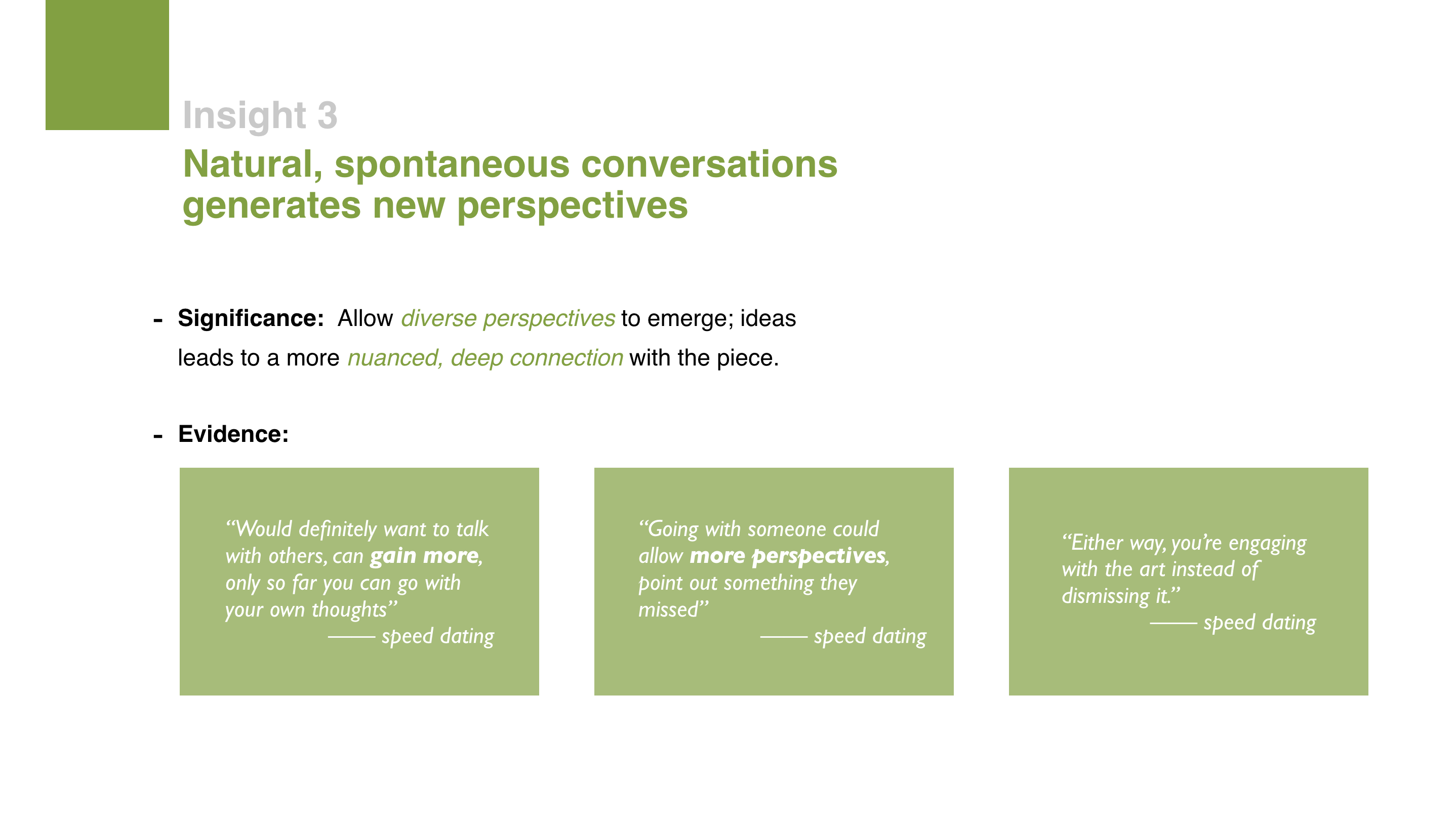
Insight 3
Possible Designs:
- Live features of comments
- Virtual group tours
- Hooks between two or more people to nudge conversation between them


Insight 4
Possible Designs:
- Provide users with guiding questions to encourage them to talk about their emotions when posing photos of public arts.
- Apply emotion-based filters, similar to how Spotify categorizes its songs and creates playlists.
